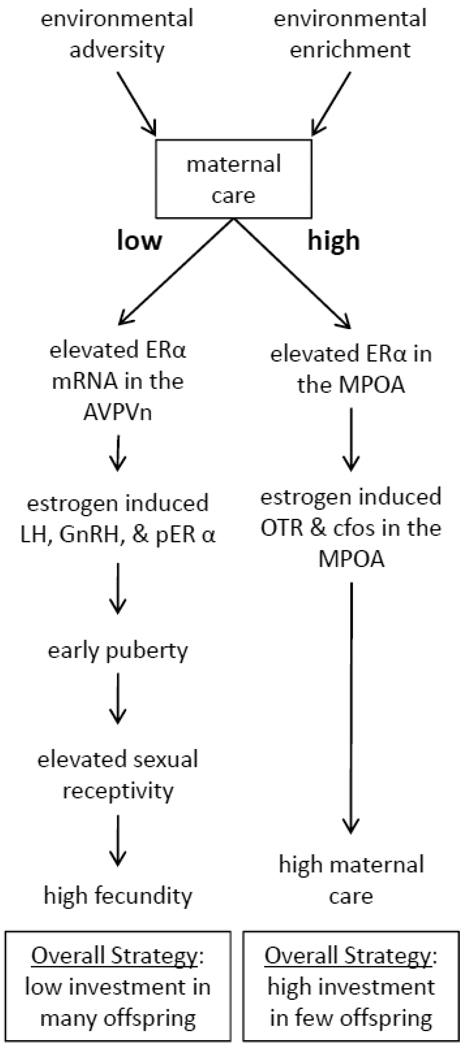Figure 1.
Illustration of the reproductive strategy that is associated with low vs. high levels of maternal licking/grooming (LG). Adverse environmental conditions experienced throughout development can lead to reduced maternal LG and a cascade of neuroendocrine changes in female offspring that induce early puberty, high sexual receptivity, and enhanced reproductive success following mating. In contrast, under conditions which promote high levels of LG, female offspring develop estrogen sensitivity within maternal circuits and inherit the high LG phenotype.

